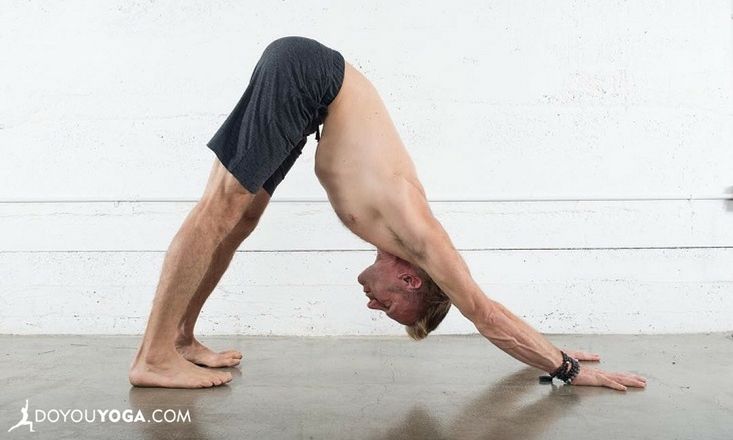Isn’t it funny how you develop relationships with yoga postures? Downward Dog (Adho Mukha Svanasana) and I have a relationship that has evolved; we’ve broken up and made up, and been best friends. Today, I like to think that we’ve settled into a long-standing intimacy. We understand each other.
If you’re looking to take a closer look at your relationship with Downward Dog, you should check out this free 30 Day Yoga Challenge. Perfect for beginners and more experienced practitioners, it really guided me through the tricky poses.
Read on for a simple, five-step checklist that you can use to find your own best expression of this pose.
1. Are My Hands Planted Firmly on the Mat?
Start from the ground (or mat) up. In life, we need a strong foundation to achieve our goals. The same is true in our asana practice. Half of your weight in Downward Dog is distributed into your hands, so make sure you are fully harnessing this support.
Spread your fingers wide and press into the space beneath your pointer finger. This is not only an anatomical cue; it’s also about energy. Imagine tendrils sprouting from your hands, forming roots that are connecting with the Earth.
2. Are My Shoulders Stabilized?
You will hear a lot of different cues on shoulders in Downward Dog from various instructors. I’ve heard and read so many pieces of advice that I ultimately left with no choice but to experiment with my body and figure out what works for me.
Once my hands are planted, I roll my shoulders outward. This is a strange feeling that takes some time to master. Imagine that someone is placing their hands on either side of your spine and drawing their hands apart. This gives my shoulders a sense of stability and strength to support me in this posture.
3. Are My Hips Drawing Away From My Shoulders?
As a yoga teacher, I’ve noticed that most students seem to think that Down Dog is about getting your feet flat on the floor. While that will give you a nice calf stretch, I’ve found that for my body, and many of my students, it draws their attention away from the sweet spot of this pose: the beautiful spine.
Downward Dog is a spine extender. When your hips draw away from your shoulders, you will create length and space in your spine for prana, life force energy, to flow more freely. Focus on those hips!
4. Are My Knees Bent?
This is one of those cues that almost everyone resists mentally until they try it physically. I think many of us hold an image in our mind of what Downward Dog is supposed to look like and we then try to recreate that on the mat.
For many people, practicing Down Dog with straight legs can tug on the lower back via the hamstrings. I don’t know about you, but I like my lower back and I want to keep it happy. Bending the knees allows me to focus on the previously mentioned spine elongation. When my knees are bent, I feel better able to draw my hips away from my shoulder. Trust me. Give it a try and you might never go back!
5. Are My Feet Comfortable and Fluid?
Again, I encourage you to release the image of flat feet in Downward Dog from your mind. I used to work so hard to get my heels on the ground, and they did eventually get there. But at the same time, I had a ton of lower back and hip pain.
Now, I allow my heels to stay off the mat and I keep my feet comfortable. I also like to move a little bit in the pose, so I’ll sometimes deeply bend one knee and allow the heel of the opposite foot to touch the ground. This is often called “walking your dog.” Rather than forcing your feet into some idealized picture, try being playful here and allow fluidity to flow through your toes and heels.
Most importantly, when practicing Downward Dog or any yoga posture, always adhere to the principle of ahimsa or non-harming. I love Down Dog! That spinal extension is so necessary and it’s helped me to recover from a pinched nerve in my upper back. I have so much respect for this pose and love mixing it up with some Child’s pose and Plank for a simple flow.
With this five-point checklist, I hope that you will find your ideal expression of Adho Mukha Svanasana as well.
Image credit: Gordon Ogden


